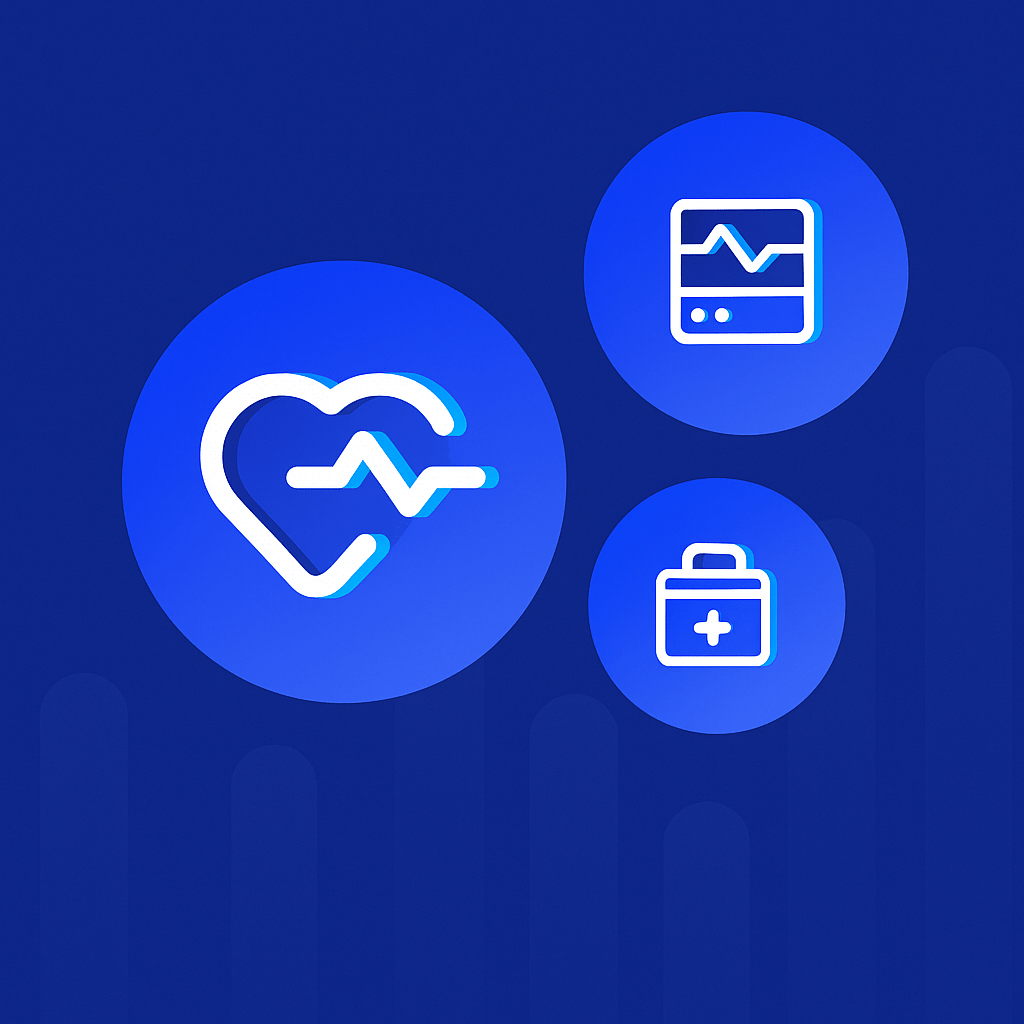.png)
Secure by Design: A Website Architecture Guide for Fintech CMOs
Key takeaways
- In fintech, website architecture is how you ensure trust, compliance, and conversion.
- Navigation must clearly separate personal and business journeys, with Products and Solutions structured for clarity.
- Compliance, security, and licensing details should occupy key positions in the architecture, not buried in the footer.
- A scalable content framework is essential for educating users and ensuring search visibility.
- Speed, mobile-first design, and accessibility impact UX and help build a recognizable brand.
Fintech is an industry with a projected market value of nearly $394.88 billion in 2025, making cutthroat competition our reality. We are all vying for the same customers and businesses, and there’s no way to sugarcoat that. Besides the product you’ve built, the real difference maker is your website. It’s a front door to your brand, and it must make potential clients feel safe enough to connect their bank account.
As a CMO, you are bound to have sat in boardrooms where conversion tanks weren’t traced back to the product or pricing, but to the site itself. Compliance pages hidden three clicks deep. Links to our certificates and stamps of approvals, designed to give security assurances relegated to the footer that no one ever reads.
In fintech, website architecture is more than just the design. It’s the whole infrastructure. Something you can’t afford to get wrong. Here’s why.
{{cta}}
Website Architecture in Fintech: In a Nutshell
Website architecture is the structure of your website designed to show not only the main sections and content of your site, but also how all the pages are connected and interlinked. See it as a digital operating system. This system determines how easily customers can navigate your services, the level of transparency and trust partners and customers will have in your product, and, ultimately, how search engines decide whether you’re visible or invisible online.
That’s why there are three elements of a great fintech website architecture you can’t overlook:
- Navigation — Can users easily find what they are looking for? Do you have dedicated sections for personal and business finances? Is there a “How It Works” section? If not, they are outta there.
- Trust — Does your site put security, regulation, and transparency in the spotlight, or does it leave it for the fine print section and terms and conditions?
- Conversion — Is there a clear path for visitors to transition from curious lookers to actual users?
If you get these three pillars right, you can hope to convert and retain. Without them, well, let’s say Sisyphus had an easier task.
Core Features Every Fintech Website Must Have
Let’s get straight to the core features of fintech websites that, no matter the design, must be there to show that transparency and instill trust.
Crystal-Clear Navigation
In fintech, navigation has to be clear. Pricing, product pages, security info, and support must be obvious within seconds, so the homepage is where you’ll place them. And here’s the nuance most fintechs overlook: personal vs. business. These are two fundamentally different customer journeys. A retail investor wants to know how to open an account. The CFO of a potential business client wants to know about integration with payroll and compliance. Two very distinct systems.
The same goes for how you structure Products and Solutions. “Products” should showcase the features (cards, accounts, APIs, etc.), while “Solutions” should link those features to use cases, such as an individual trading in crypto.
Trust-Building Pages Deserve a Spot on the Hero Section
The hero section has room enough to house compliance, security, and company transparency. No need to bury it deep below. Take Trustly. Their “Company” section is a masterclass in this. It’s not a vanity page that tells of their greatness. No sir. It’s how fintech websites avoid trust and reputation issues.
Right there, users can understand how the company is structured, how compliance is handled, and what security standards are in place. Ok, there’s also Sustainability, Press, and other subsections. But it’s all about demonstrating your commitment to safety and transparency.
Conversion-focused Elements
A conversion is more than just the “Click here” button. The conversion process should follow a natural flow, where you first reassure users of your product's quality, then explain how to use it, and finally guide them to try it themselves.
The best sites treat this like choreography. The homepage doesn’t shove a “Sign Up” button in your face immediately. Instead, they walk you through the core value, the transparent fees, speed, and global reach, and only then do you drop a clean “Get Started” CTA right after the proof. It feels inevitable, not forced.
As a CMO, you know the attention spans are short. But it would be unwise to just throw CTAs at the users without context. It will come across as something coerced and undoubtedly scare the users away.
Content Framework Easy to Scale
Both the users and search engines need to understand why your product matters. The former in order to use it, the latter in order to display it to users looking for a similar service or product. That’s where content comes into play.
Every API, every use case, every guide should be structured into a content hub that’s as easy to navigate as the product itself. You can call it a Help Centre or a Knowledge Database. Its goal is to host your blogs and guides and have them all neatly categorized, interlinked, and mapped into the site architecture so nothing feels like it's been bolted on.
Stellar Performance and Accessibility
User Experience is at the very centre of a top-performing website of any kind, let alone a fintech one. It’s how Google decides whether or not to rank your site. The more users spend time on it and interact with it, the better the ranking you’ll get. But it’s not just about the rankings. If your site stutters, users assume your product will too. A sluggish page load will have them running away in no time. So, the top fintech website design and architecture you want must be based on lean code, optimized media, and compliance with Core Web Vitals.
Best Practices in Designing Fintech Website Architecture
In my experience leading fintech marketing teams and working with designers to build a user-friendly website, these are some of the best practices that separate our sites from the pack.
1. Mobile-first Architecture
Most of the website traffic today is mobile. This means the architecture and website design you opt for should be optimized for smaller screens but still retain the same clarity and everything in sight, in both landscape and portrait modes. Easier said than done. It’s hard to squeeze in the navigational menu, CTA, and all the compliance details into one view, but that’s the name of the game, I am afraid.
2. Security Features as Part of the Structure
When creating a website structure, I don’t fail to account for the details about the security and safety of our products and services. For me, it’s not marketing fluff. SSL badges, 2FA flows, plus all the certifications and licenses we have are woven into the flow of the site and not buried in the FAQ section.
3. How to Structure Product Explanations
One of the biggest gaps I see on fintech sites is the “How it works” layer of the architecture. Designers either overlook it completely or assume people will learn to use it on the go. When products do get described, it’s done in abstract terms (“seamless payments,” “smart investing”) with no concrete flow for the user to actually understand the functioning. That’s a structural failure.
Instead, I include the following:
- Step-by-step breakdowns (sign up > verify > connect > transact).
- Capabilities split in a logical way (payments, cards, APIs, etc.).
- Real use cases instead of feature dumps.
- Examples with CTAs
4. Internal Linking
Users should be able to go through logical journeys with zero friction, so if the page is about how, say, crypto trading on your platform works, there’s got to be a CTA to get people to register. At the same time, you should be able to give search engines a clear map of your expertise to ensure your content ranks for top search queries. It’s the hidden architecture that compounds over time.
Common Pitfalls to Stay Away from in Fintech Website Design
Even the best fintech products lose credibility due to poorly structured websites. I’ve seen it oh, too many times before. Here are the red flags I see most often:
- Crammed navigational menu: Menus crammed with jargon or every possible page. If users can’t spot Products, Solutions, or Compliance instantly, they’re gone.
- Hiding compliance in the footer: Treating licenses, security, and regulatory info like fine print is a credibility killer. These need to be front and center.
- Sites not properly fit for scalability: Sites that can’t scale content such as guides and blogs, are destined to receive a demolition order and start rebuilding in six months. Expensive mistake to make.
- Neglecting speed and mobile: Slow load times or broken flows on phones signal unreliability. In fintech, that’s fatal.
- Copy-pasting other companies’ MOs: The lack of originality is plaguing the world of website design, and just because something worked for Stripe doesn’t mean Wise can replicate. Not to mention the branding clashes. Be original and a visionary. The only recipe for success.
Conclusion
When working on a fintech website architecture, focus on clear navigation, visible security, and scalable content. Treat your site map like a product roadmap, which means conducting frequent audits, addressing weak points, and scaling with intent. And if you lack the expertise, work with a fintech website design agency that knows how to blend compliance with conversion. In this industry, architecture is everything.
{{cta}}
FAQ about Fintech Website Architecture
Why do fintech websites need great architecture?
With a carefully designed architecture, fintech websites ensure their users can easily find information about products and services, pricing, compliance, and security details, while guiding them towards conversions.
How should fintech websites structure navigation for different users?
Fintech websites usually serve both individuals and businesses, so the hero section on the homepage should offer both user journeys. “Products” typically focus on core features, such as online payments, whereas “Solutions” align these features with specific use cases for investors, companies seeking comprehensive payment solutions, and others.
Is compliance important in fintech website design?
Yes, compliance is central to fintech website design and architecture as it builds trust through transparency regarding the licenses and certificates the company holds, not to mention the security features ot employs.
How can fintech websites optimize performance through website design?
By using lean code, optimized images, and going for the mobile-first approach, fintech websites can improve their Core Web Vitals considerably.





.png)
.svg)









-min.png)


.png)










.svg)

.png)
.png)
.webp)
.svg)

